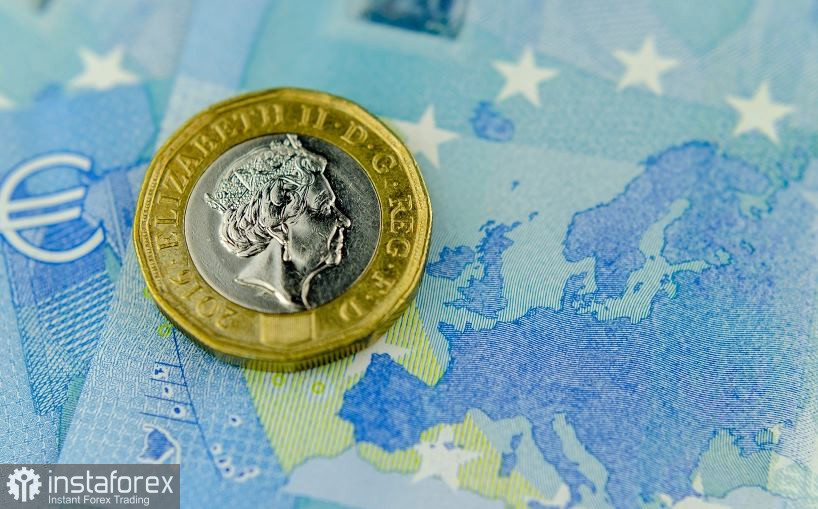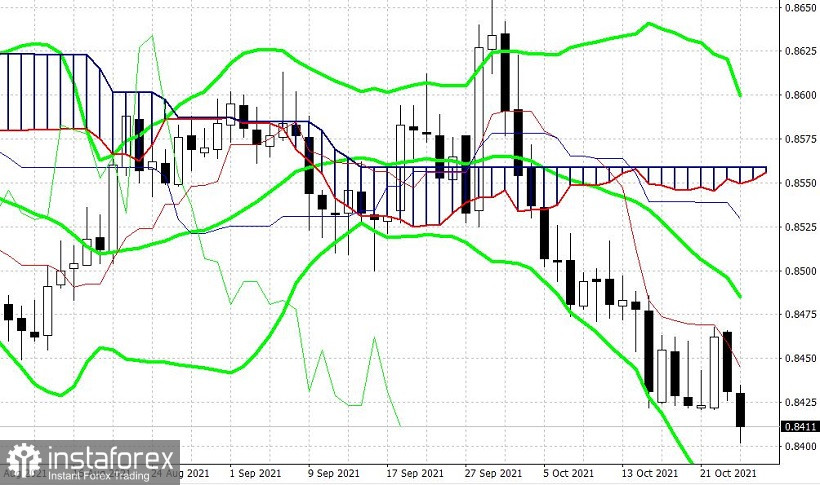The pound is again gaining momentum across the market ahead of the penultimate meeting of the Bank of England this year, which will be held next week. Hawkish expectations continue to strengthen amid relevant comments from experts and the growth of key macroeconomic indicators. And in a pair with the dollar, the British pound behaves relatively modestly (dollar bulls restrain the onslaught of opponents), then in the main cross-pairs, the pound has "spread its wings."
This is especially evident in the euro-pound pair, which on Tuesday updated a 20-month low. And, apparently, the downside trend has not yet exhausted itself, given the "dovish" attitude of the ECB representatives. The uncorrelation of the positions of the European Central Bank and the British regulator plays the role of a locomotive that pulls the cross to new price lows.

So, on November 4, that is, next Thursday, the Bank of England will sum up the results of its next meeting. This meeting, in any case, will not be a "pass-through": the regulator will either meet the hawkish expectations or disappoint the supporters of the British currency. At the moment, the scales are tipping towards the hawkish scenario. Actually, for this reason, the pound is strengthening its position.
For example, according to currency strategists of the financial conglomerate Wells Fargo (which is part of the so-called "big four" US banks), the British regulator will raise the rate by 15 basis points next week. Next year, according to the bank's analysts, the Central Bank of Great Britain will gradually tighten the parameters of monetary policy - the rate will be raised by 25 points in May, and by another 25 in November. In total, the rate will reach 0.75% by the end of 2022.
However, not all experts agree with this "hawkish" scenario. Thus, the majority of analysts surveyed by Reuters agreed that the British regulator will be the second (after the Reserve Bank of New Zealand) of the world's leading central banks to decide to raise rates amid the coronavirus crisis. But they did not agree that the first increase will take place this year, and even more so at the November meeting. According to the interviewed experts, the first increase should be expected in the first quarter of next year (that is, at the February or March meeting). Only four out of 19 economists admitted the likelihood of monetary tightening already at the November meeting.
From the point of view of medium-term trading, it does not matter at all whether the British regulator decides to raise the rate in November or take a wait-and-see attitude until February-March 2022. Until November 4, the pound will be in high demand due to the "buy the rumor, sell the news" trading principle. And if paired with the dollar, this principle is unlikely to "work" in full (since dollar bulls are also in anticipation of the November Fed meeting), while it will work "to the fullest" in a pair with the euro.
It should be noted here that after the last release of quite strong data on the growth of European inflation, cautious talk appeared on the market that the ECB may still raise the interest rate on deposits at the end of next year. Many representatives of the European regulator did not like such rumors. In particular, the chief economist of the Central Bank Philip Lane said that the markets are "wishful thinking," complaining about the weak level of communication. It is likely that Christine Lagarde will also voice such theses following the ECB October meeting, which results will be known on Thursday.
Even the moderately dovish attitude of the European regulator will contrast sharply with the intentions that are "attributed" to the Bank of England. I repeat - in the context of the medium-term, it doesn't really matter, whether the Central Bank of Great Britain will raise the rate in November or will it take a wait-and-see attitude. The "hawkish attitude" that keeps the pound afloat will support the British currency until the announcement of the results of the Bank of England meeting.
Indirect support for the pound today was provided by the macroeconomic report, which was published by the Confederation of British Industry. This is an indicator of retail sales activity. The indicator is based on a survey of retail and wholesale companies on the dynamics of sales. It turned out that the balance of retail sales CBI grew much stronger than expected in October (30 points against the forecast of growth to 13 points).

Technically, the EUR/GBP cross has not exhausted its downside potential. In particular, on the D1 timeframe, the price is between the middle and lower lines of the Bollinger Bands indicator, which indicates the priority of the downside direction. The Ichimoku indicator, in turn, has formed a bearish "Parade of Lines" signal, which also indicates a bearish sentiment. The nearest support level (target for the downside movement) is located at 0.8390 (lower line of the Bollinger Bands on the daily chart). The main price barrier is slightly lower - at around 0.8350 (the lower line of the Bollinger Bands on the MN timeframe).





















